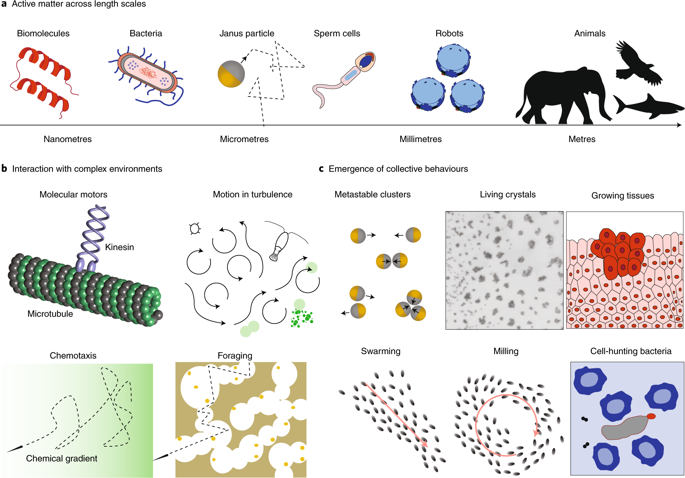Nature Machine Intelligence ( IF 18.8 ) Pub Date : 2020-02-14 , DOI: 10.1038/s42256-020-0146-9 Frank Cichos , Kristian Gustavsson , Bernhard Mehlig , Giovanni Volpe

|
The availability of large datasets has boosted the application of machine learning in many fields and is now starting to shape active-matter research as well. Machine learning techniques have already been successfully applied to active-matter data—for example, deep neural networks to analyse images and track objects, and recurrent nets and random forests to analyse time series. Yet machine learning can also help to disentangle the complexity of biological active matter, helping, for example, to establish a relation between genetic code and emergent bacterial behaviour, to find navigation strategies in complex environments, and to map physical cues to animal behaviours. In this Review, we highlight the current state of the art in the application of machine learning to active matter and discuss opportunities and challenges that are emerging. We also emphasize how active matter and machine learning can work together for mutual benefit.
中文翻译:

机器学习中的活性物质
大型数据集的可用性促进了机器学习在许多领域的应用,并且现在也开始形成主动研究。机器学习技术已经成功应用于活动数据,例如,深度神经网络用于分析图像和跟踪对象,而递归网络和随机森林则用于分析时间序列。然而,机器学习还可以帮助弄清生物活性物质的复杂性,例如,帮助建立遗传密码与紧急细菌行为之间的关系,在复杂环境中寻找导航策略以及将物理线索映射到动物行为。在这篇评论中,我们重点介绍了将机器学习应用于活动事物的最新技术,并讨论了正在出现的机遇和挑战。










































 京公网安备 11010802027423号
京公网安备 11010802027423号